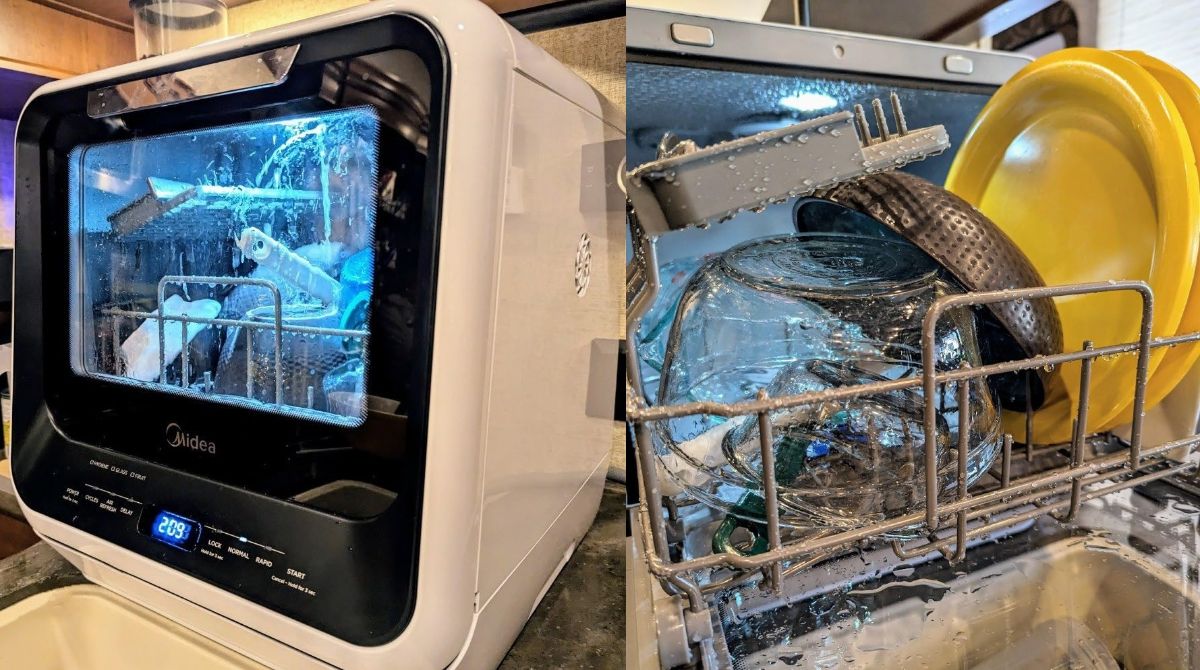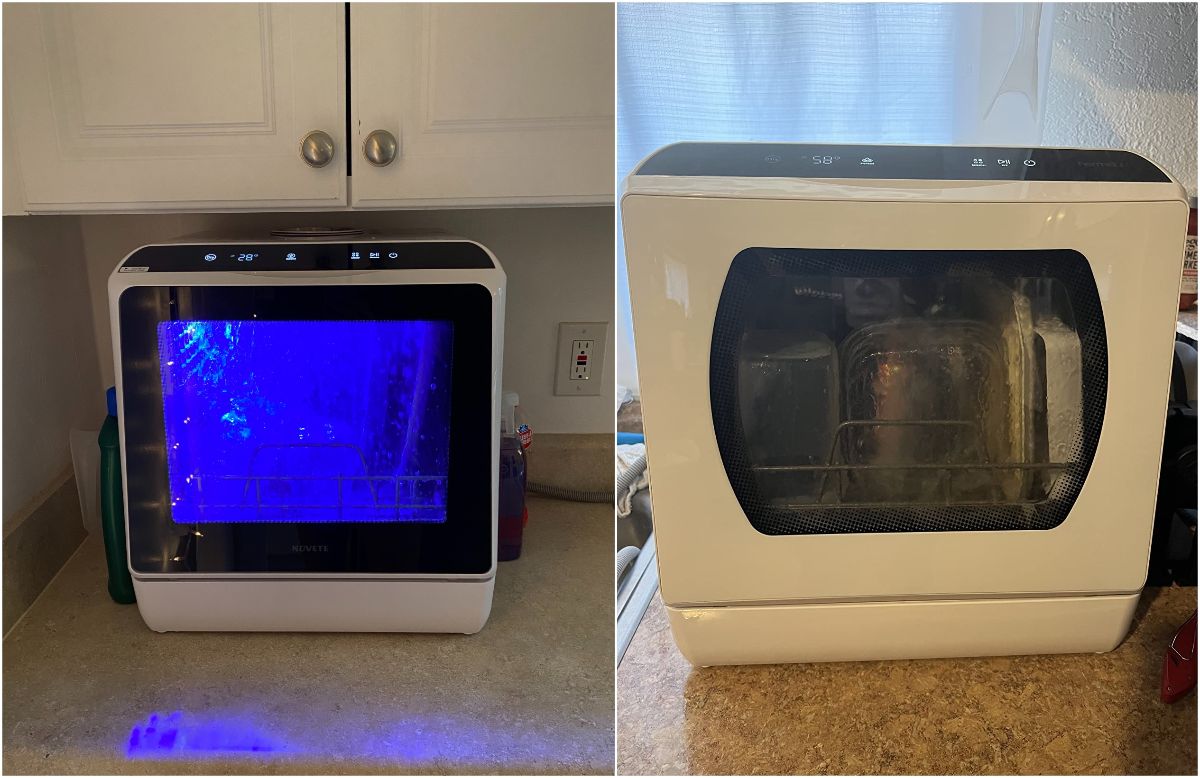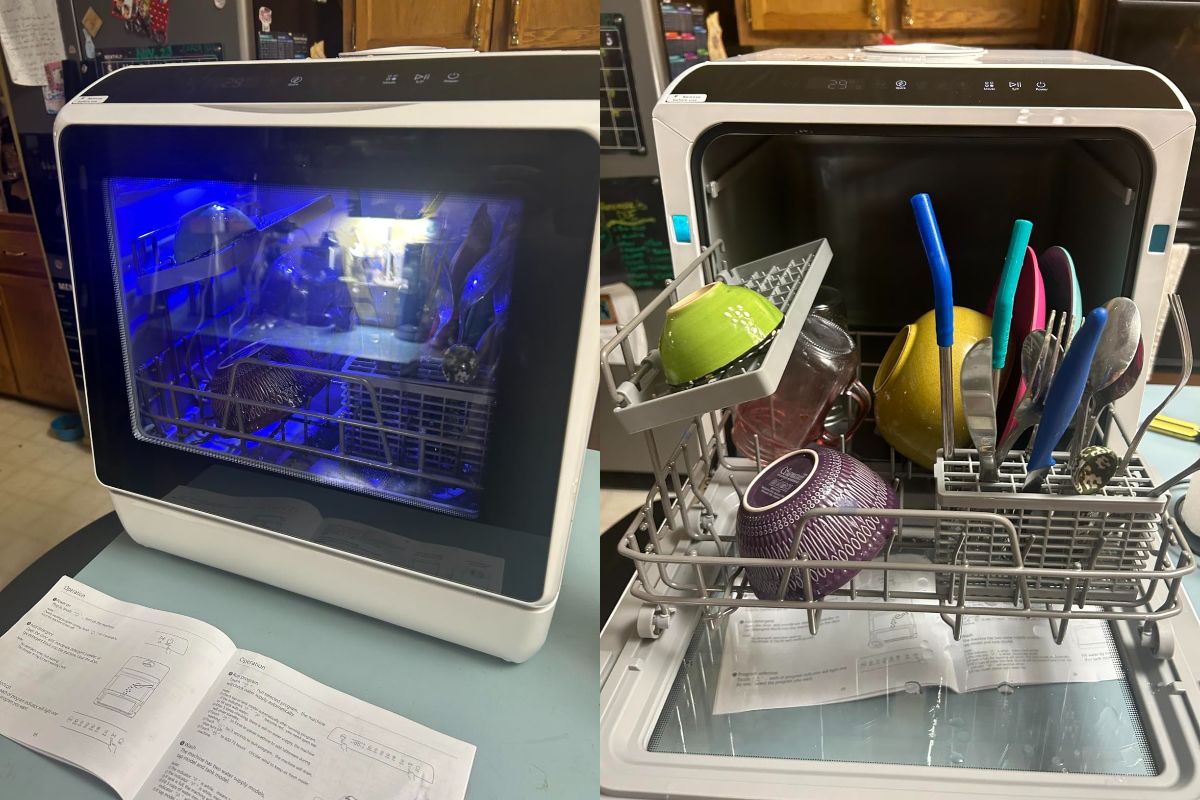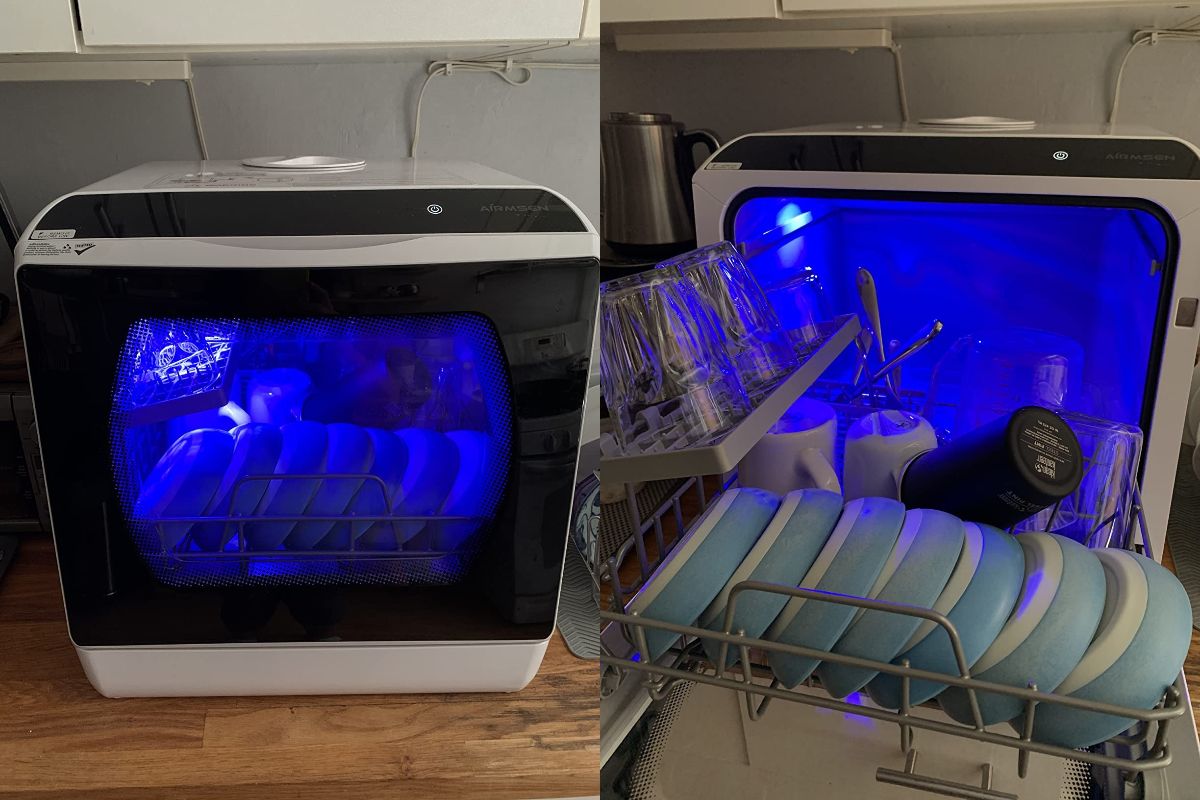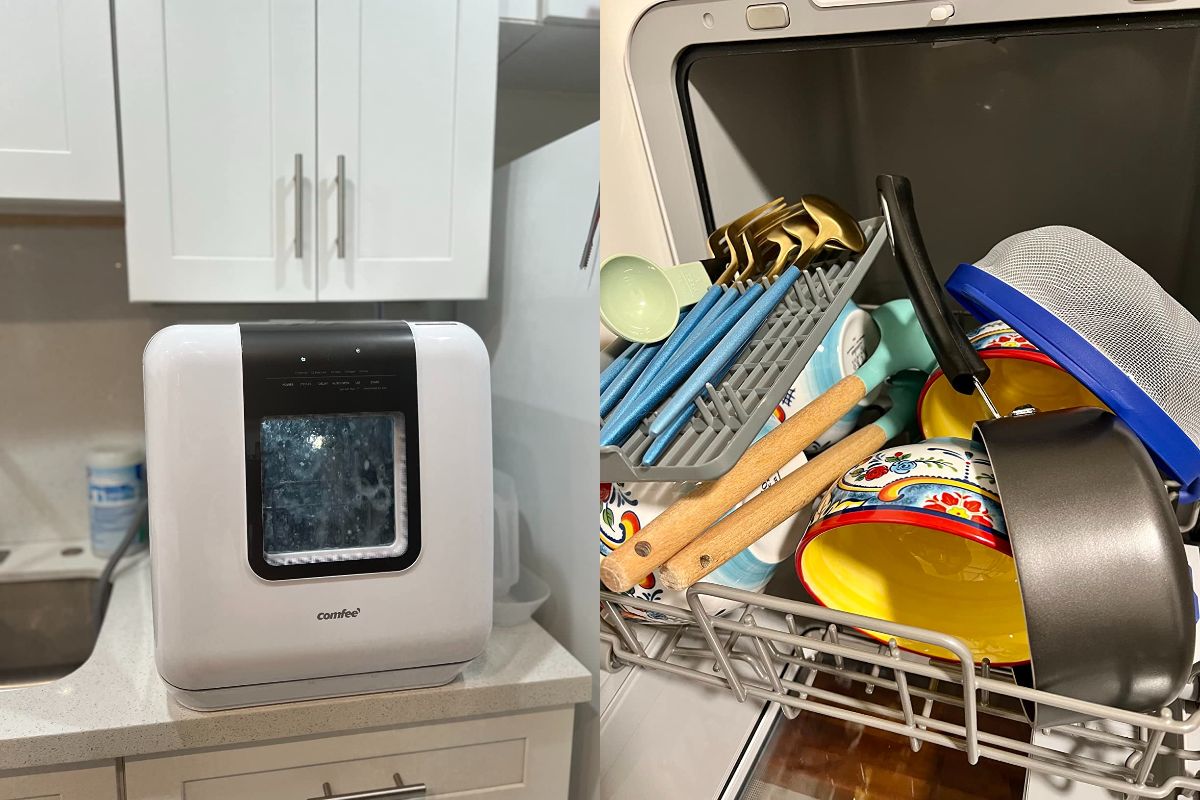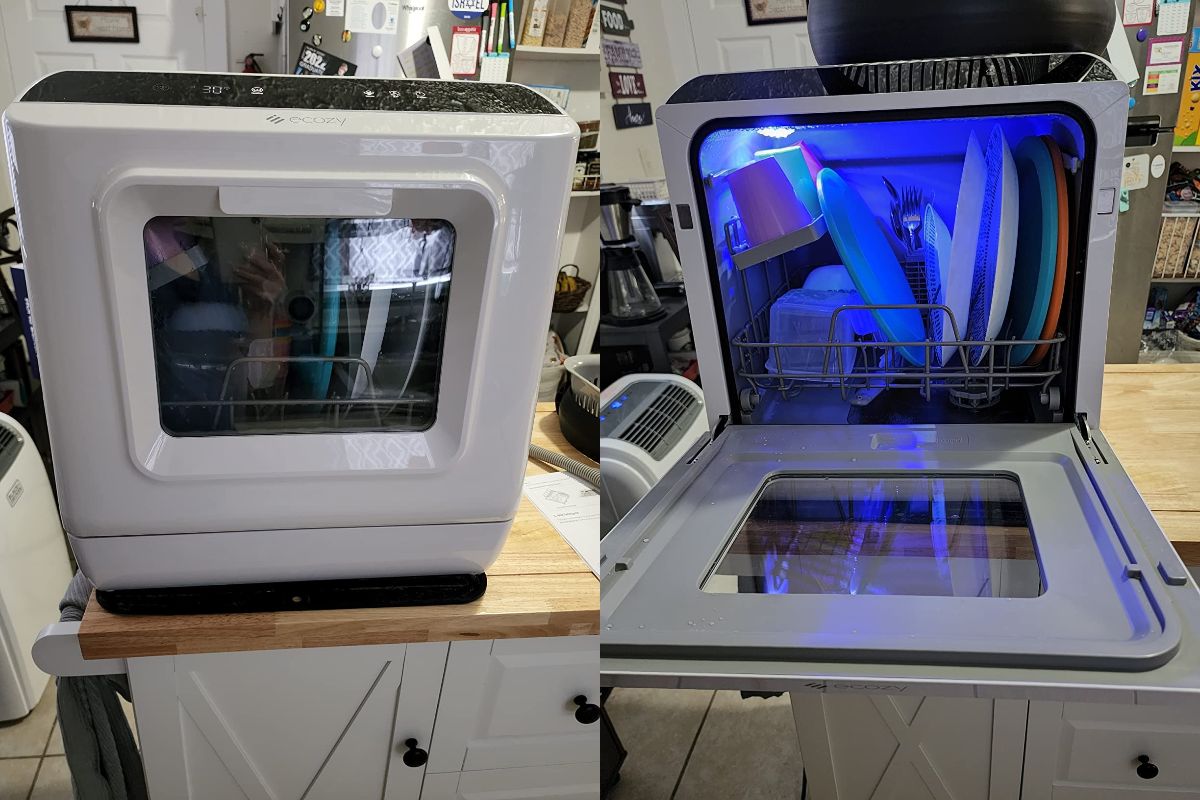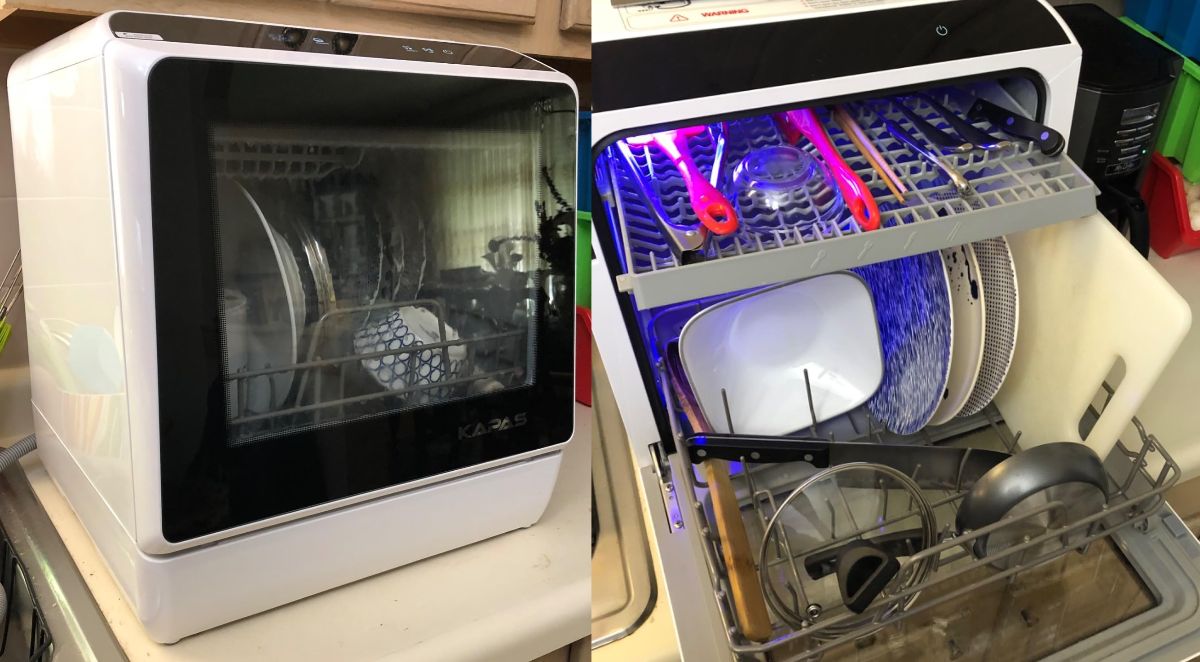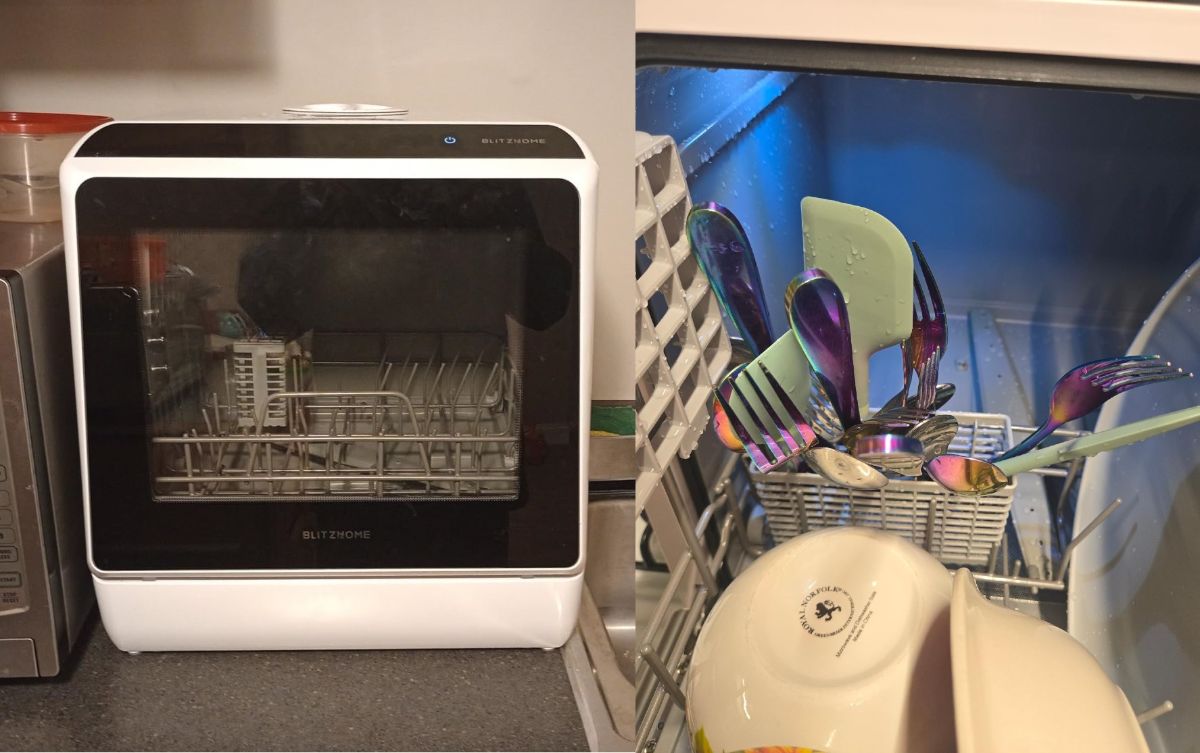After reviewing countless dishwashers over the years, I’ve developed a real appreciation for the practicality that portable and countertop models bring to small kitchens and unique living spaces. They’re not meant to replace a full-size built-in dishwasher, but when space is limited or plumbing hookups aren’t available, a compact option can be a lifesaver. Over the past few weeks, I’ve been putting the Midea Portable Dishwasher through daily use, and I’ve combined my own findings with insights from other owners to give you a balanced look at what this machine can and cannot do.
Spoiler: it does an impressive job for its size, but it’s not perfect.
Setup and First Impressions
The unboxing experience was straightforward. The machine arrived well-protected, and installation took me less than 15 minutes. Midea includes everything you need: a faucet adapter, hoses for water intake and drainage, and even a funnel if you’d rather fill the 5-liter internal water tank manually. I personally hooked it to my kitchen sink faucet, which meant I never had to lug pitchers of water back and forth.
Build quality impressed me right away. The unit feels solid and heavy-duty, which inspires confidence but also means you won’t want to move it around too often. At about 45 pounds, it’s best to find a permanent spot. The door mechanism is smooth, the racks are sturdy, and the LED-lit interior adds a surprisingly premium feel.
Capacity and Performance
Here’s where expectations matter. This is not a dishwasher for a large family or for tackling big pots and pans. Think of it as a solution for a couple, a small household, or a weekend getaway cottage. In my testing, it comfortably handled dishes for two people after a day or two of meals. Plates up to 10 inches fit, but anything larger simply won’t. If you routinely cook with large woks or roasting pans, you’ll still be handwashing those.
Performance, however, is where the Midea shines. Even dishes with dried sauces and greasy residue came out clean. I tested both the normal cycle (roughly two hours with drying) and the rapid cycle (about 40 minutes, but dishes stay wet). Both performed well, though for thorough cleaning and drying, I preferred the longer cycle. There’s also an “Air Refresh” setting that extends drying time, leaving dishes completely dry, which is a nice option if you can spare the extra time.
A clever detail is the dual spray arms, one on the top and one on the bottom, which ensure full coverage. That said, you do need to load carefully. Overlapping dishes or cramming too many in will lead to spots that don’t get rinsed properly.
Some users even reported success washing baby bottles, fruits, and delicate glassware. I tried it with wine glasses, and they came out sparkling with no water marks. That’s something my full-size dishwasher occasionally struggles with.
Looking for more top-rated options? Check out our expert picks for the Best Dishwashers that deliver sparkling results every time.
Maintenance and Troubleshooting
No dishwasher is maintenance-free, and the Midea requires a bit of attention. The filter at the bottom catches food debris and needs rinsing every few cycles. It’s easy to remove and clean under the sink.
One minor design flaw is a narrow area near the door hinge where grime can build up. A quick wipe after each use keeps it from becoming an issue, but it’s worth noting.
The drain hose works reliably, though I recommend securing it firmly to your sink or drain. The included suction cup is not always enough if the hose has to bend. I ended up using adhesive mounts for peace of mind.
As for noise, it’s quieter than many full-size dishwashers. You’ll hear the swish of water, but it never felt disruptive, even during late-night cycles in a small apartment.
A few owners did report unit-specific problems such as cycles stopping prematurely or receiving units that looked like returns. My own machine worked without issue, but quality control can vary, so buying from a retailer with easy returns is smart.
Long-Term Use
After weeks of use, the novelty hasn’t worn off. I find myself relying on it daily because it takes the dread out of washing dishes. The energy and water consumption are modest compared to handwashing. In fact, Midea’s design uses less water than I do when scrubbing under a running tap.
Still, I can see potential drawbacks over the long haul. Because it’s compact, you’ll likely need to run it more frequently if you cook a lot. For an RV or small apartment, that’s manageable, but in a family household it would quickly feel inadequate.
Durability-wise, Midea has a solid reputation in appliances, and nothing in my experience suggested poor engineering. The machine feels sturdy, and others who’ve used it for months report consistent results.
Pros and Cons
Pros
- Compact footprint fits apartments, RVs, cottages, and small kitchens
- Multiple water supply options: faucet hookup or manual tank filling
- Excellent cleaning performance, even on tough food stains
- Internal water heater allows use with cold water supply
- Flexible cycles: normal, rapid, and air refresh with drying modes
- Quiet operation compared to larger dishwashers
- Bright LED interior light and clear controls make it user-friendly
Cons
- Limited capacity; struggles with large plates, pans, or woks
- Heavy for a countertop appliance, not easy to move around
- Grime can collect near the door hinge and requires extra cleaning
- Short drain hose and weak suction cup make setup fiddly in some spaces
- Drying performance weaker on rapid cycle; requires hand-drying afterward
- Quality control issues reported by a few buyers (arrived used or with defects)
Not sure which model is right for you? Read our complete Dishwasher Buying Guide to find the perfect match for your kitchen.
Final Verdict
The Midea Portable Dishwasher is not a one-size-fits-all solution, but it fills its niche exceptionally well. If you live in a small space, travel in an RV, or want a secondary dishwasher for a cottage, this compact unit is a fantastic option. It won’t handle your Thanksgiving cookware, but it will spare you from endless handwashing of daily plates, cups, and utensils.
Compared to similar options from brands like Farberware or Black+Decker, Midea edges ahead in build quality and cleaning consistency. The trade-off is size and weight, which makes it less flexible for constant repositioning.
At around $300, it represents good value for the convenience it brings. It’s not flawless, but for households of one to three people, it’s a real game changer. Personally, I wouldn’t want to go back to life without it.
